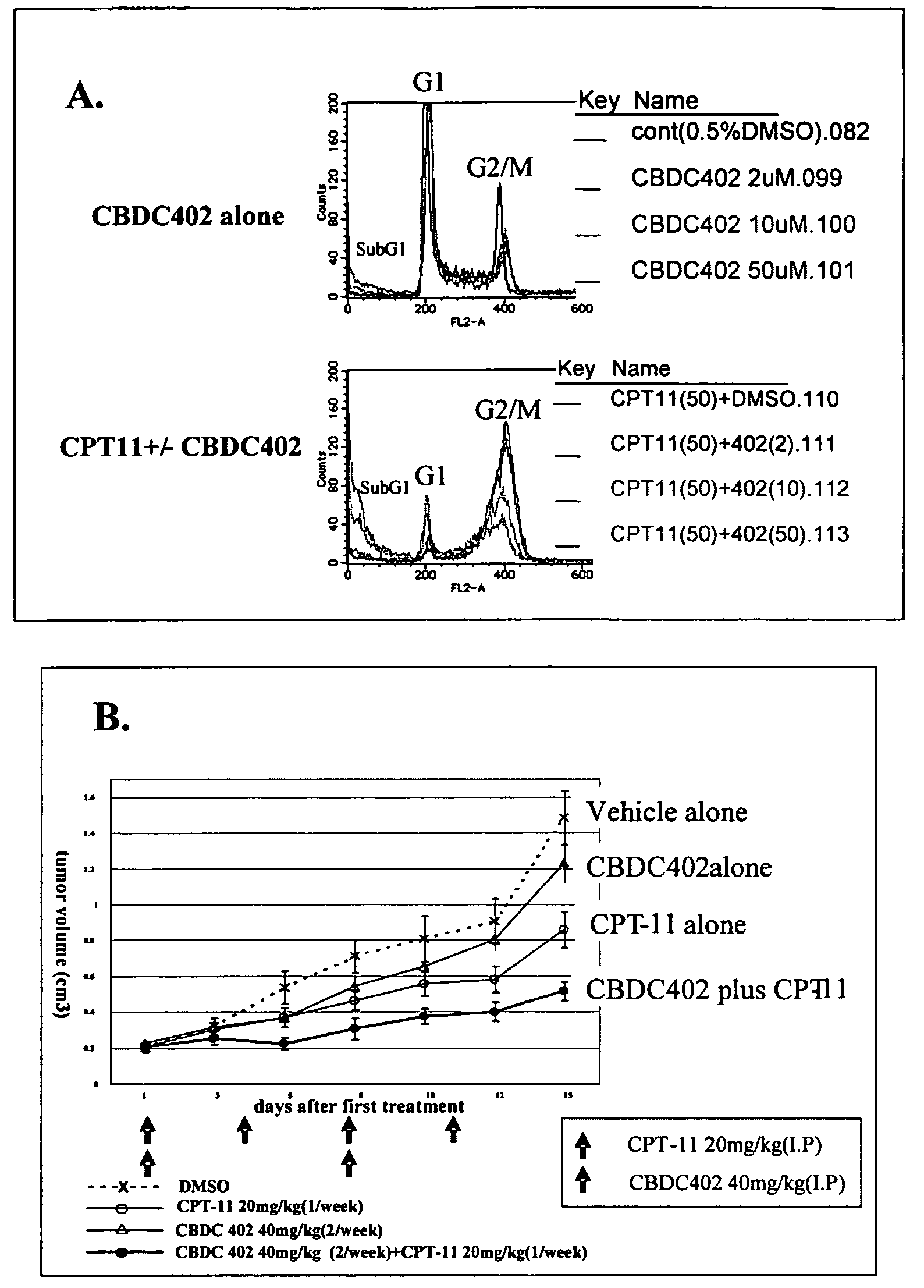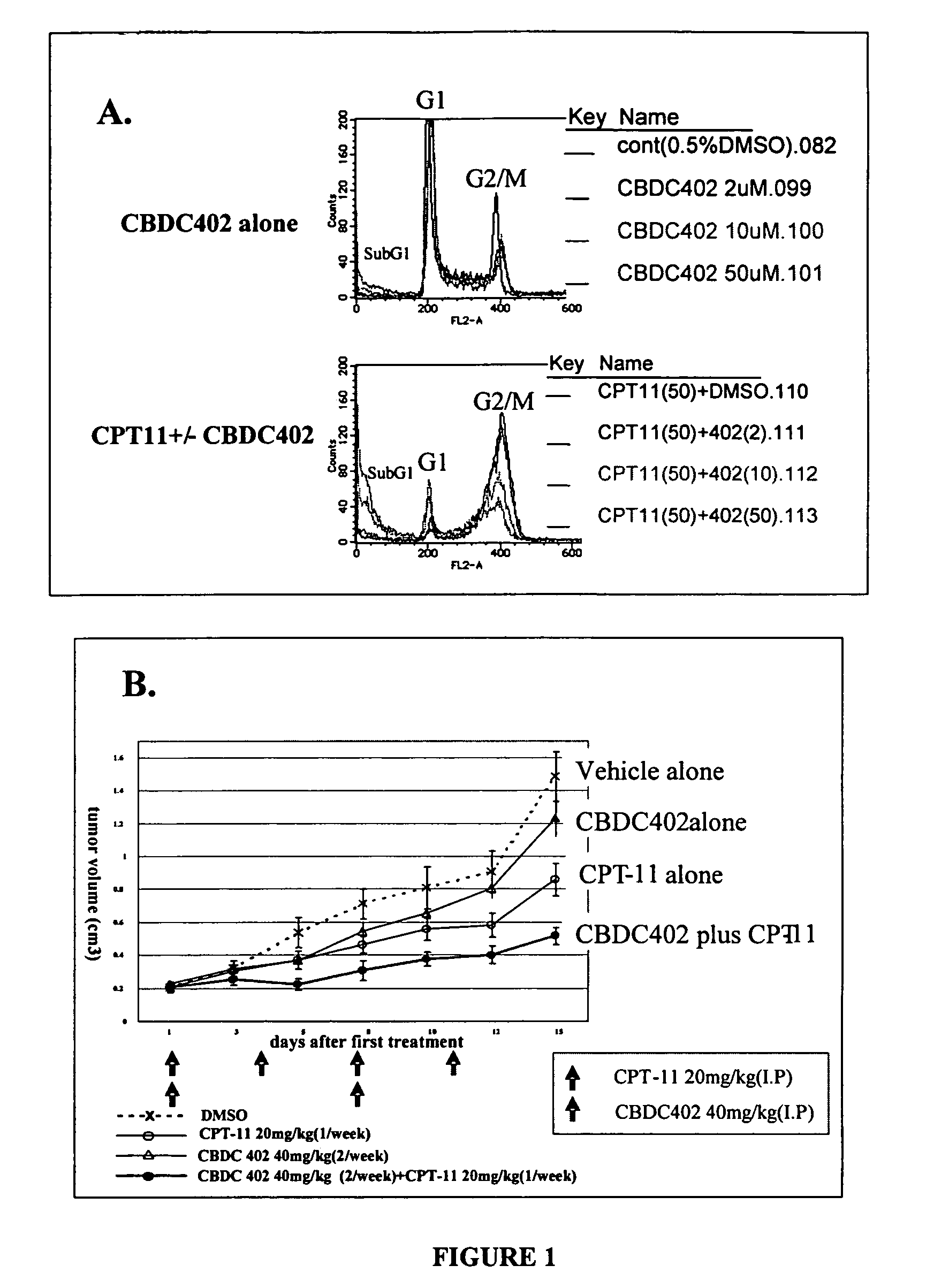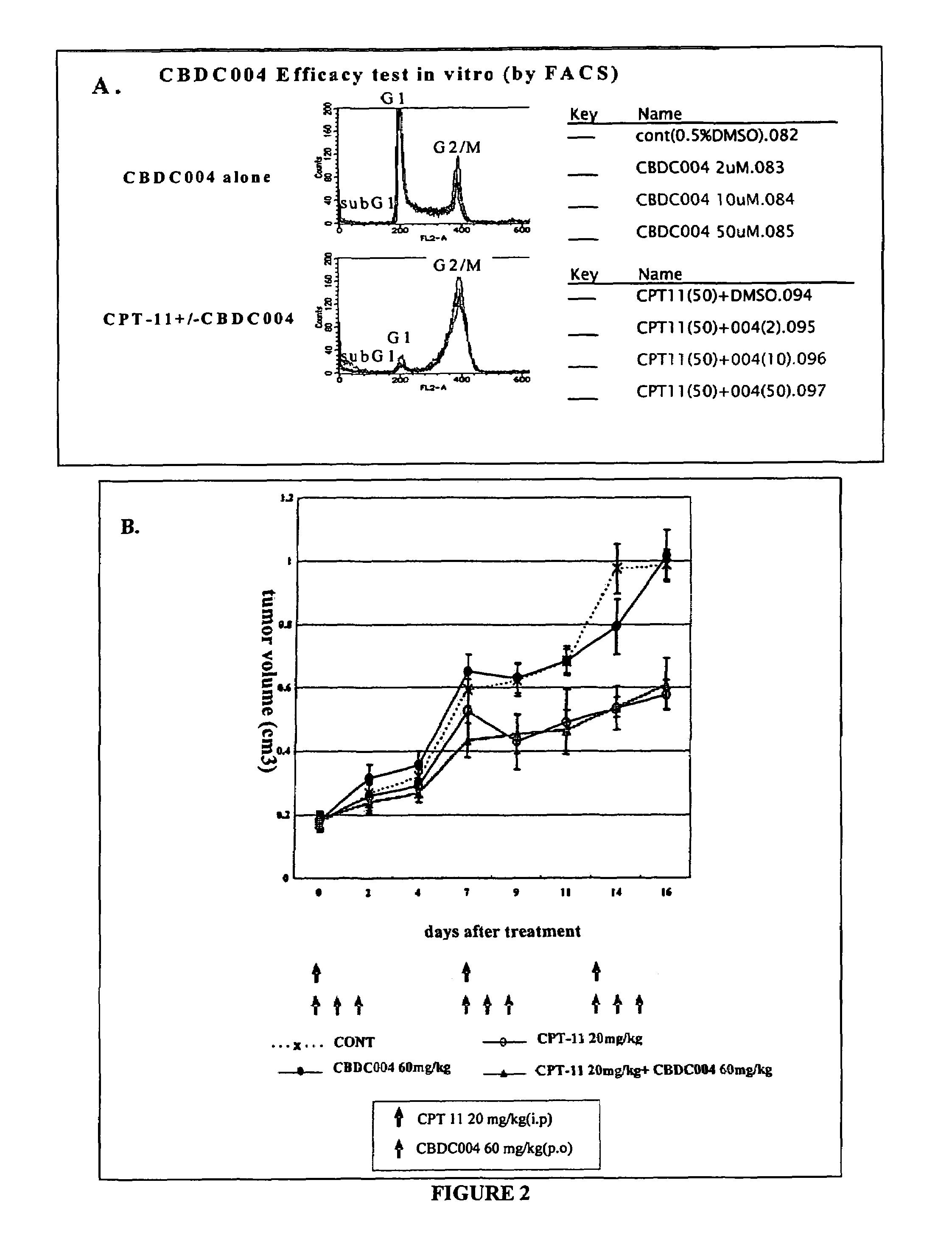Sensitivity test to predict efficacy of anti-cancer therapies
a technology of anti-cancer therapy and sensitivity test, which is applied in the direction of instruments, drug compositions, peptide/protein ingredients, etc., can solve the problems that many anti-cancer treatment assays take 1-3 weeks to complete, and the side effects of many of these assays are often accompanied by unwanted side effects, so as to achieve low cytotoxicity and high selective cytotoxicity
- Summary
- Abstract
- Description
- Claims
- Application Information
AI Technical Summary
Benefits of technology
Problems solved by technology
Method used
Image
Examples
example 1
Correlation of In Vitro Sensitivity Test and In Vivo Efficacy Test Using CBDC402
[0105]Cells from a human colon cancer derived cell line HCT-116 were used in an in vitro sensitivity test that measures DNA content of cells by flow cytometry, and in an in vivo efficacy test that measures xenograft tumor growth. The effects of conventional anti-cancer therapy CPT-11, novel candidate anti-cancer therapy CBDC402, a combination of the two compounds, or control treatments (vehicle), were measured in each test system and compared.
[0106]In vitro sensitivity test: HCT-116 cells (from ATCC) were cultured in McCOY5A medium (Sigma Chemical Co.) with L-glutamine (Sigma Chemical Co.), penicillin-streptomycin, and 10% fetal calf serum at 37° C. in 5% CO2 / air. Cultured cells (at 1.6×105) were pelleted by centrifugation, and then re-suspended and incubated in 300 μl Krishan's solution (0.1% sodium citrate, 50 μg / ml propidium iodide, 20 μg / ml RNase A, 0.5% Nonidet P-40) for 1 h at 4° C. The quantity of...
example 2
Correlation of In Vitro Sensitivity Test and In Vivo Efficacy Test Using CBDC004
[0111]Cells from a human colon cancer derived cell line HCT-116 were used in an in vitro sensitivity test that measures DNA content of cells by flow cytometry, and in an in vivo efficacy test that measures xenograft tumor growth. The effects of conventional anti-cancer therapy CPT-11, novel candidate anti-cancer therapy CBDC004, a combination of the two compounds, or control treatments (vehicle), were measured in each test system and compared.
[0112]In vitro sensitivity test: The in vitro sensitivity test using HCT-116 cells and flow cytometry was carried out as described above, with the modification that CBDC004 was used instead of CBDC402. The DNA content of each cell was measured at 24 hr. CBDC004 treatment alone (2, 10, 50 μM for 3 hr) did not alter the DNA content HCT-116 cells in vitro (FIG. 2A, upper panel). CPT-11 treatment alone (3 hr; 501 μM) changed the cell cycle distribution dramatically, whe...
example 3
Simulation of Sensitivity Test for Clinical Applications
[0116]As a simulation of the sensitivity test for the clinical situation, established xenograft tumors of MIAPaCa2 cells in SCID mice were extracted from the mice and cultured in vitro in the presence or absence of a conventional anti-cancer therapy and a novel candidate anti-cancer therapy CBP501 (SEQ ID NO: 26), according to the protocol as follows.
[0117]Protocol:
[0118]Day 1 Preparation of a Single Cell Suspension from Extracted Xenograft Tumor.
[0119]Xenograft tumors of MIAPaCa2 cells were excised from xenograft tumor bearing mice and place in a 10 cm plate with 10 ml of complete culture medium (DMEM (Dainihonseiyaku Co., Osaka, Japan) with 2.5% horse serum (Invitrogen Co., Carlsbad, Calif.) for MIAPaCa2 with 10% fetal calf serum (Equitech-bio, Kerrville, Tex.) at 37° C. with 5% CO2 / air). The tissue was sliced into small pieces and non-tumor tissue was removed to the extent possible. The sliced pieces were placed in another 1...
PUM
| Property | Measurement | Unit |
|---|---|---|
| checkpoint time | aaaaa | aaaaa |
| temperature | aaaaa | aaaaa |
| proliferative disorder | aaaaa | aaaaa |
Abstract
Description
Claims
Application Information
 Login to View More
Login to View More - Generate Ideas
- Intellectual Property
- Life Sciences
- Materials
- Tech Scout
- Unparalleled Data Quality
- Higher Quality Content
- 60% Fewer Hallucinations
Browse by: Latest US Patents, China's latest patents, Technical Efficacy Thesaurus, Application Domain, Technology Topic, Popular Technical Reports.
© 2025 PatSnap. All rights reserved.Legal|Privacy policy|Modern Slavery Act Transparency Statement|Sitemap|About US| Contact US: help@patsnap.com



